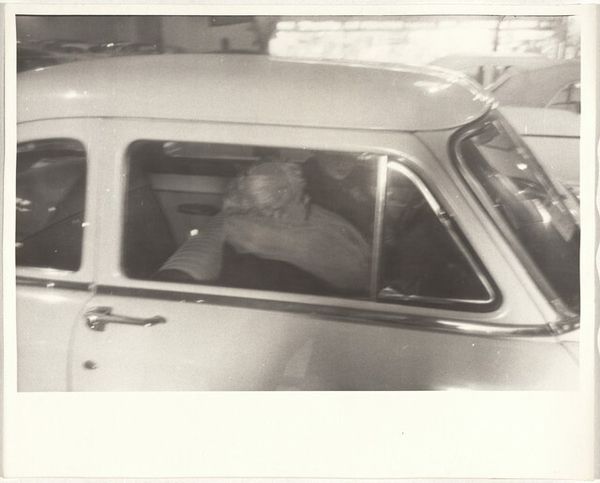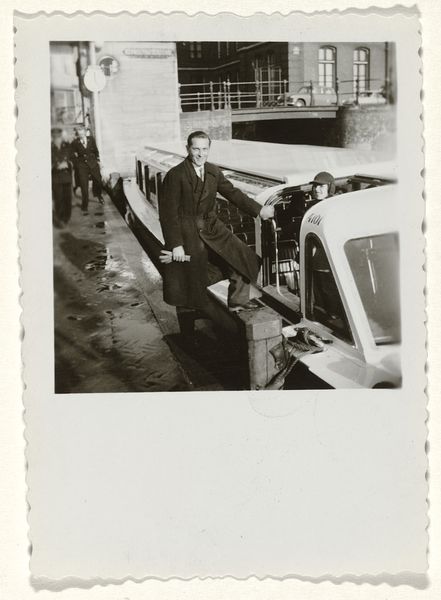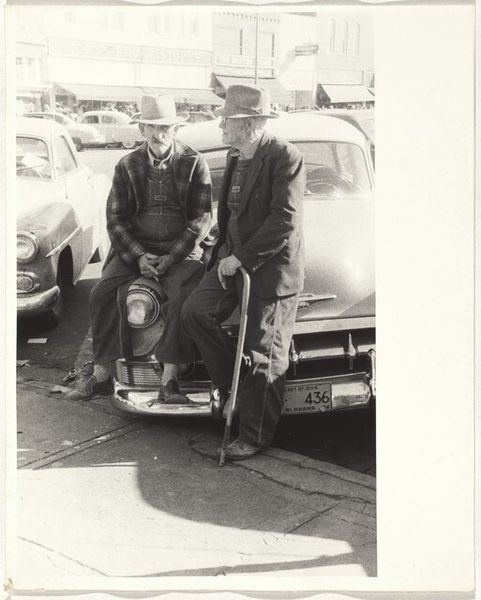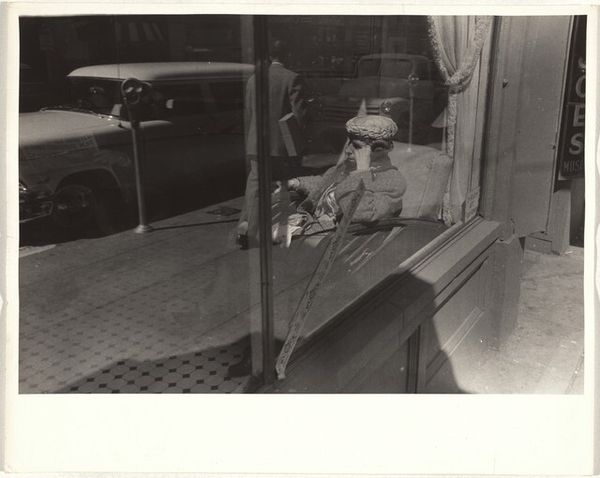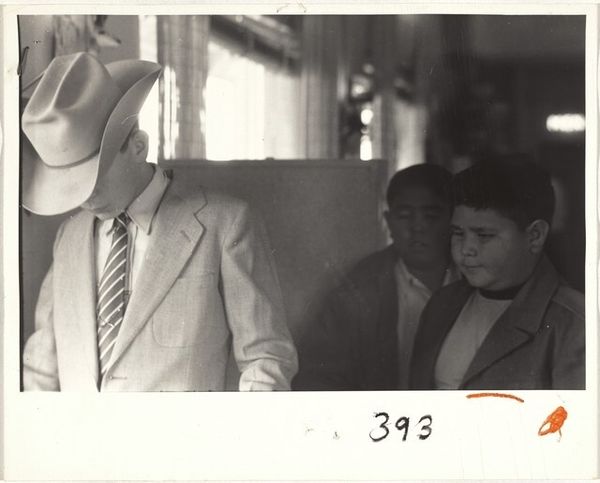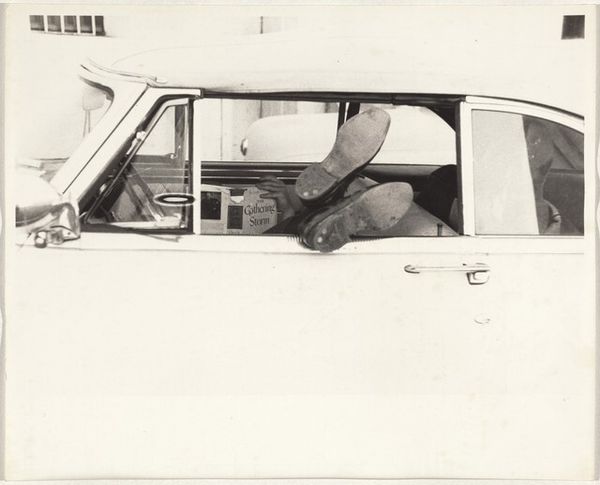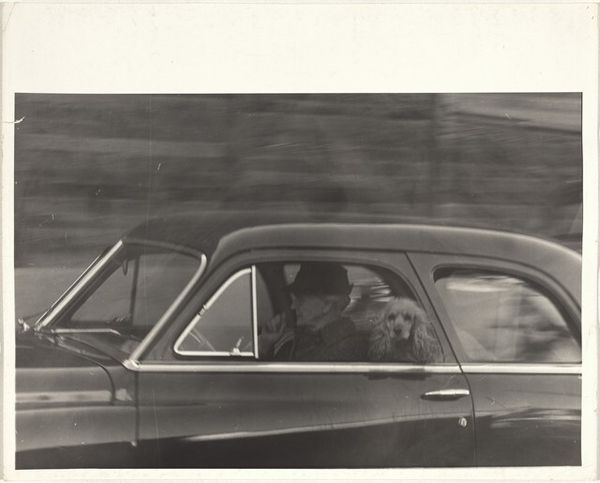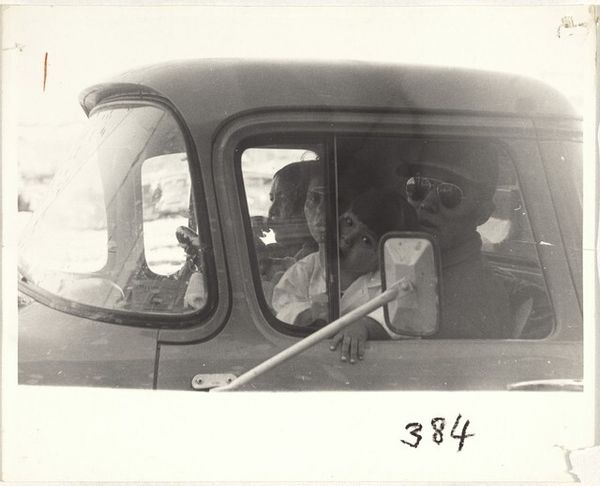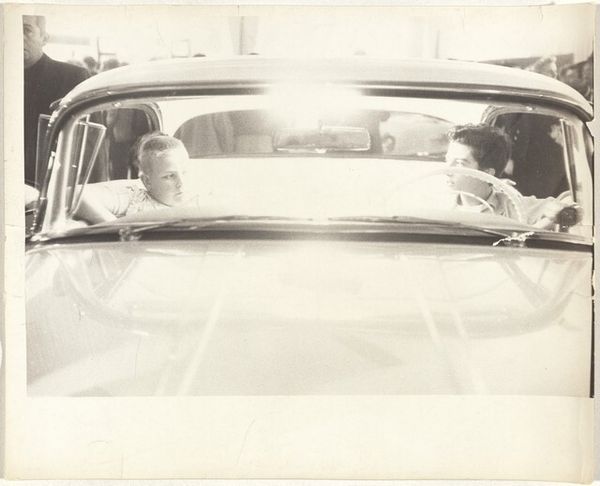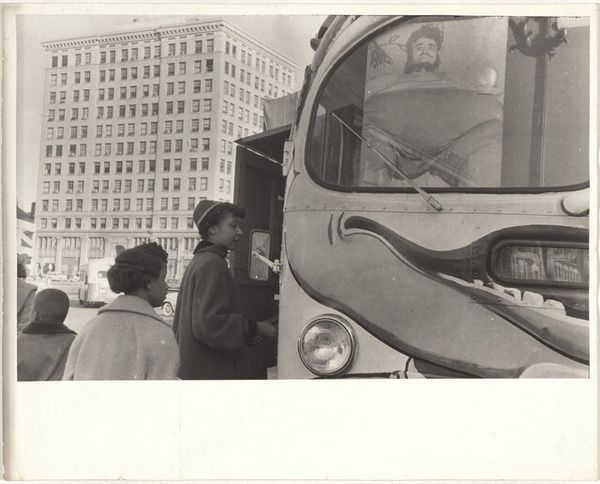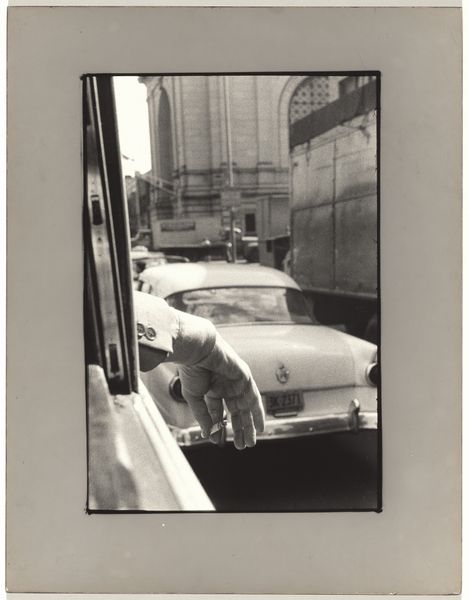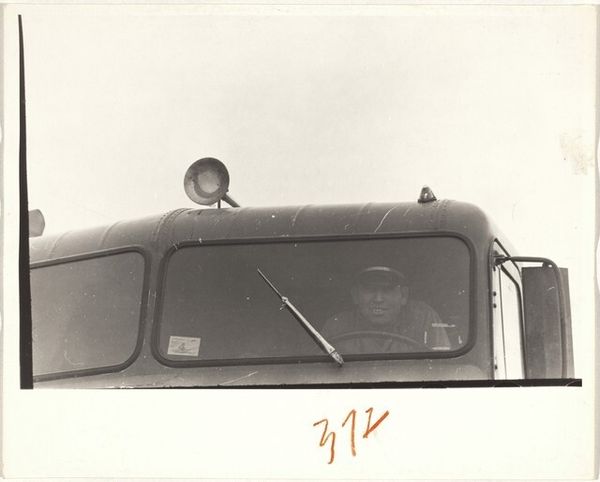
print, photography, gelatin-silver-print
#
print photography
# print
#
landscape
#
street-photography
#
photography
#
historical photography
#
gelatin-silver-print
#
realism
Dimensions: sheet: 20.2 x 25.2 cm (7 15/16 x 9 15/16 in.)
Copyright: National Gallery of Art: CC0 1.0
Curator: This is Robert Frank's gelatin silver print, "Man at bus station--Sacramento, California," taken in 1956. Editor: There’s such starkness to it. The harsh lines of the buses box in the figure, really emphasizing a feeling of isolation. It looks like it’s documenting a particularly quiet, lonely moment in a place defined by transience. Curator: Frank was known for capturing just that: the transient moments and undercurrents of American life in the 50s. It was part of a larger cultural critique of post-war society. This particular photo speaks to the economic anxieties of the time and how they affected individual experiences. Editor: I’m struck by how unglamorous the Greyhound buses seem. It's all metal, rubber, and hard edges; a tool of movement rather than a symbol of luxurious travel. Note how Frank also captures the dust and dirt. The banality, and the unvarnished reality. Curator: The bus station as a space represents social mobility but also the realities of those who rely on public transport. Think about the larger narrative – segregation was still in full force in parts of America at that time. The man’s dress, the presence of luggage: these details invite many possible readings of his social position and travel purpose. Editor: Absolutely. Even the contrast in the materials tells a story. You've got the soft cloth of his coat and the man's leather bag, sitting next to the hard, mass-produced steel of the buses. These materials shape the textures and visual narrative of the image, illustrating the class disparities present at the bus station. Curator: And beyond class, you can argue about gender. Think of the bus station itself as an important landmark within an ever-changing American cultural landscape, as well as this man representing many themes from alienation to travel in mid-century America. Editor: For me, it boils down to this really clever capture of these ordinary, accessible materials arranged in such a way as to subtly reveal social structures at work. Curator: It really captures a powerful atmosphere and is indicative of the photographer's larger aims of capturing something important about mid-century America and doing so through a carefully constructed point of view.
Comments
No comments
Be the first to comment and join the conversation on the ultimate creative platform.
